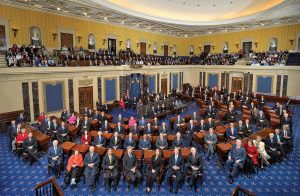The COVID crisis hit China just as a new philanthropic donor class had begun emerging. In some cases, Chinese philanthropists want to fund good works for purely altruistic reasons. In others, donors have sought to curry political favor by donating to causes in line with government priorities.
No matter what the reason, the yuan are flowing. Chinese philanthropists contributed the equivalent of more than $2.82 billion (U.S.) during the first half of 2020 to alleviate the impact of the coronavirus.
While the majority of the money went for medical and social relief efforts, more than $250 million has been contributed to research and development projects aimed at creating vaccines or treatments for the coronavirus, according to Pandemic Philanthropy: Exploring Chinese Donors’ Embrace of Covid-19 R&D Funding, a report from Beijing-based Bridge Consulting.
The focus on research and development marks a shift in Chinese philanthropic thinking, which has traditionally focused on providing physical goods to meet the immediate needs of recipients. The increase in science-based philanthropy comes as China’s scientific capabilities have increased during the last decade or so, enabling it to be a global player.
At the same time, a new class of corporate and individual philanthropists in China has emerged, especially within the country’s tech and real estate sectors, as well as the automotive industry and academic alumni associations.
In short, newly established private foundations are able to earmark what the report calls “game-changing amounts of money” to be targeted to specific causes. These foundations are also more willing than donors from years past to invest in longer-term needs that don’t have immediately demonstrable results. The “immediate gratification” model has been a traditional hallmark of Chinese philanthropy, according to the report’s authors.
The Chinese government has seized upon the new philanthropic impulses. According to the report, state media tend to group stories about the donations into a China-wide response that a) benefits the world and b) shows support for Chinese President Xi Jinping’s desire for a unified global research and development effort.
The report authors note that government embrace of philanthropy is a relatively new phenomenon. In years past, the need for philanthropy would have been seen as a reflection of government policy failures. But new laws enacted in 2016 that clarified charitable status and demanded transparency from Chinese charitable organizations expanded the ability of foundations to receive public fundraising status.
Coronavirus charity is, of course, a relatively new cause. In 2019, education services made up the greatest number of recipients of Chinese largesse, with 35 percent of funds going to these causes, followed by poverty relief, which took in 29 percent of all donations. Health and medical causes had traditionally been underfunded by Chinese donors before the coronavirus crisis.
Private sector contributions to nonprofits are a relatively new phenomenon, one fueled by economic expansion. Given the potential financial impact of the coronavirus crisis on world markets, the trend toward these donations may be imperiled before it has a chance to become deeply rooted in Chinese corporate culture, the report authors postulate. The Chinese government, according to the report’s authors, can help strengthen those roots by continuing to emphasis government priorities and looking favorably on private entities that help meet those priorities.










